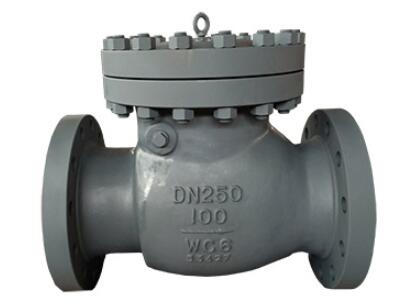Check valves play a critical role in various industrial systems by allowing fluid or gas to flow in one direction while preventing backflow. Ensuring that these valves function correctly is vital for maintaining the integrity and safety of your system. Regular inspection of check valves is essential to avoid unexpected failures, reduce downtime, and extend the life of your equipment. This article explores the factors that determine how often check valves should be inspected and offers guidelines to help you establish an effective inspection schedule.

Understanding the Role of Check Valves
Check valves are designed to prevent backflow in a piping system, ensuring that the flow of fluids or gases moves in only one direction. They are commonly used in water and wastewater systems, oil and gas pipelines, chemical processing, and HVAC systems. The proper functioning of check valves is crucial to prevent contamination, pressure drops, and potential damage to other equipment. Regular inspections help identify wear and tear, corrosion, and potential issues before they lead to valve failure or system shutdowns.
Factors Influencing Inspection Frequency
The frequency of check valve inspections depends on several factors, including the operating environment, the type of fluid or gas being transported, the criticality of the valve’s role in the system, and the manufacturer’s recommendations. Valves operating in harsh environments, such as those exposed to corrosive chemicals or extreme temperatures, may require more frequent inspections. Similarly, check valves that are critical to system safety or performance should be inspected more often to ensure reliability.
Manufacturer Recommendations
One of the primary sources for determining inspection intervals is the manufacturer’s guidelines. Manufacturers typically provide recommendations based on the specific design and materials used in the check valve. These guidelines consider the expected wear patterns and the operational environment. Following these recommendations helps ensure that the check valves are inspected at intervals that balance the need for maintenance with the risk of failure. However, it’s important to note that these guidelines are often based on ideal conditions, so adjustments may be necessary based on actual operating conditions.
Industry Standards and Best Practices
Industry standards and best practices also play a crucial role in determining the inspection frequency of check valves. Many industries, such as oil and gas, water treatment, and chemical processing, have established standards that dictate maintenance and inspection schedules for check valves. For example, the American Petroleum Institute (API) and the American Society of Mechanical Engineers (ASME) provide guidelines for valve inspections. Adhering to these standards helps ensure compliance with safety regulations and industry norms, reducing the risk of valve failure.
Routine Inspection Intervals
As a general rule, check valves should be inspected at least once a year. However, depending on the factors mentioned above, more frequent inspections may be necessary. For valves operating under normal conditions with non-corrosive fluids, an annual inspection is usually sufficient. In contrast, valves exposed to corrosive environments, high pressures, or high temperatures may require inspections every six months or even quarterly. Regular inspections should include visual checks for signs of wear, corrosion, and leaks, as well as functional tests to ensure the valve opens and closes properly.
Signs That Indicate Immediate Inspection
In addition to routine inspections, certain signs may indicate the need for immediate inspection of check valves. These signs include unusual noises such as vibrations or rattling, changes in pressure or flow rates, and visible leaks around the valve. If any of these symptoms are observed, the check valve should be inspected promptly to prevent further damage or system failure. Early detection of issues through timely inspections can help avoid costly repairs and extended downtime.
Conclusion
Regular inspection of check valves is essential for maintaining the safety, efficiency, and longevity of your system. The frequency of inspections depends on factors such as operating conditions, manufacturer recommendations, and industry standards. At a minimum, check valves should be inspected annually, but more frequent inspections may be necessary for valves in harsh environments or critical applications. If you need assistance in setting up an inspection schedule or have specific questions about your check valves, please contact us. As a trusted supplier, we are here to provide the expertise and support you need to keep your systems running smoothly.


